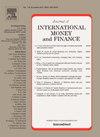Optimal credit development regimes and impact of foreign capital flows
IF 2.8
2区 经济学
Q2 BUSINESS, FINANCE
引用次数: 0
Abstract
We investigate optimal credit development and examine the role of foreign capital flows. We use data from 87 countries to estimate plausible econometric models. We find evidence of four existing credit development regimes. We show the existence of a growth-enhancing credit development regime where any credit allocation to the economy promotes economic growth. We also use disaggregated foreign capital flows to investigate the impact of these capital flows on credit development regimes. We find that the impact of foreign capital flows depends on the type of foreign capital flows, the credit development regime and the level of countries’ economic development. Portfolio debt inflows are mainly associated with a moderate credit development regime. However, portfolio equity inflows and other debt inflows are mainly associated with a high credit development regime. We argue that, in their credit allocation behavior, banks tend to strategically use portfolio debt inflows in a moderate credit development regime, and portfolio equity inflows and other debt inflows (not in portfolio debt) in a high credit development regime. Finally, we study credit development regimes around the start of financial crises. We find that the second credit development regime—which is strongly associated with economic growth—is not associated with future financial crises. We call this regime the optimal credit development regime. We also find that the third credit development regime—which still has a positive impact on economic growth—can lead to financial crises two years later. We call this regime the arbitrage credit development regime. These results provide a new perspective on credit development in an environment of international economic and financial integration.
最优信贷发展制度和外国资本流动的影响
我们研究了最优信贷发展,并考察了外资流动的作用。我们使用来自87个国家的数据来估计合理的计量经济模型。我们发现了四种现有信贷发展机制的证据。我们证明了一个促进增长的信贷发展机制的存在,其中任何对经济的信贷分配都会促进经济增长。我们还使用分类的外国资本流动来研究这些资本流动对信贷发展制度的影响。我们发现,外资流动的影响取决于外资流动的类型、信贷发展机制和各国经济发展水平。有价证券债务流入主要与温和的信贷发展制度有关。但是,投资组合股票流入和其他债务流入主要与高信贷发展制度有关。我们认为,在他们的信贷配置行为中,银行倾向于在适度的信贷发展机制中战略性地使用投资组合债务流入,而在高信贷发展机制中倾向于使用投资组合股权流入和其他债务流入(不是投资组合债务)。最后,我们研究了金融危机爆发前后的信贷发展机制。我们发现,与经济增长密切相关的第二种信贷发展机制与未来的金融危机无关。我们称这种制度为最优信贷发展制度。我们还发现,第三种信贷发展机制——对经济增长仍有积极影响——可能在两年后引发金融危机。我们称这种机制为套利信贷发展机制。这些结果为国际经济金融一体化环境下的信贷发展提供了新的视角。
本文章由计算机程序翻译,如有差异,请以英文原文为准。
求助全文
约1分钟内获得全文
求助全文
来源期刊

Journal of International Money and Finance
BUSINESS, FINANCE-
CiteScore
4.20
自引率
4.00%
发文量
141
期刊介绍:
Since its launch in 1982, Journal of International Money and Finance has built up a solid reputation as a high quality scholarly journal devoted to theoretical and empirical research in the fields of international monetary economics, international finance, and the rapidly developing overlap area between the two. Researchers in these areas, and financial market professionals too, pay attention to the articles that the journal publishes. Authors published in the journal are in the forefront of scholarly research on exchange rate behaviour, foreign exchange options, international capital markets, international monetary and fiscal policy, international transmission and related questions.
 求助内容:
求助内容: 应助结果提醒方式:
应助结果提醒方式:


